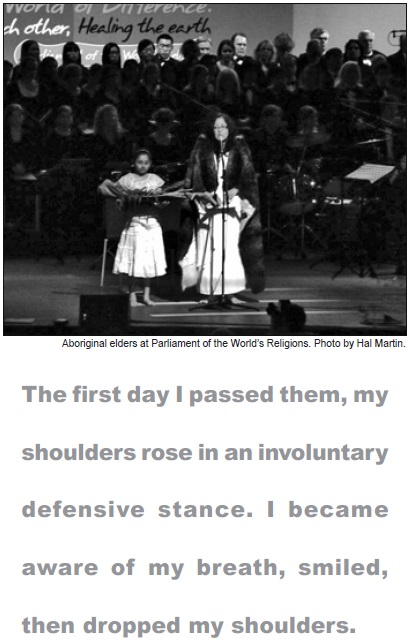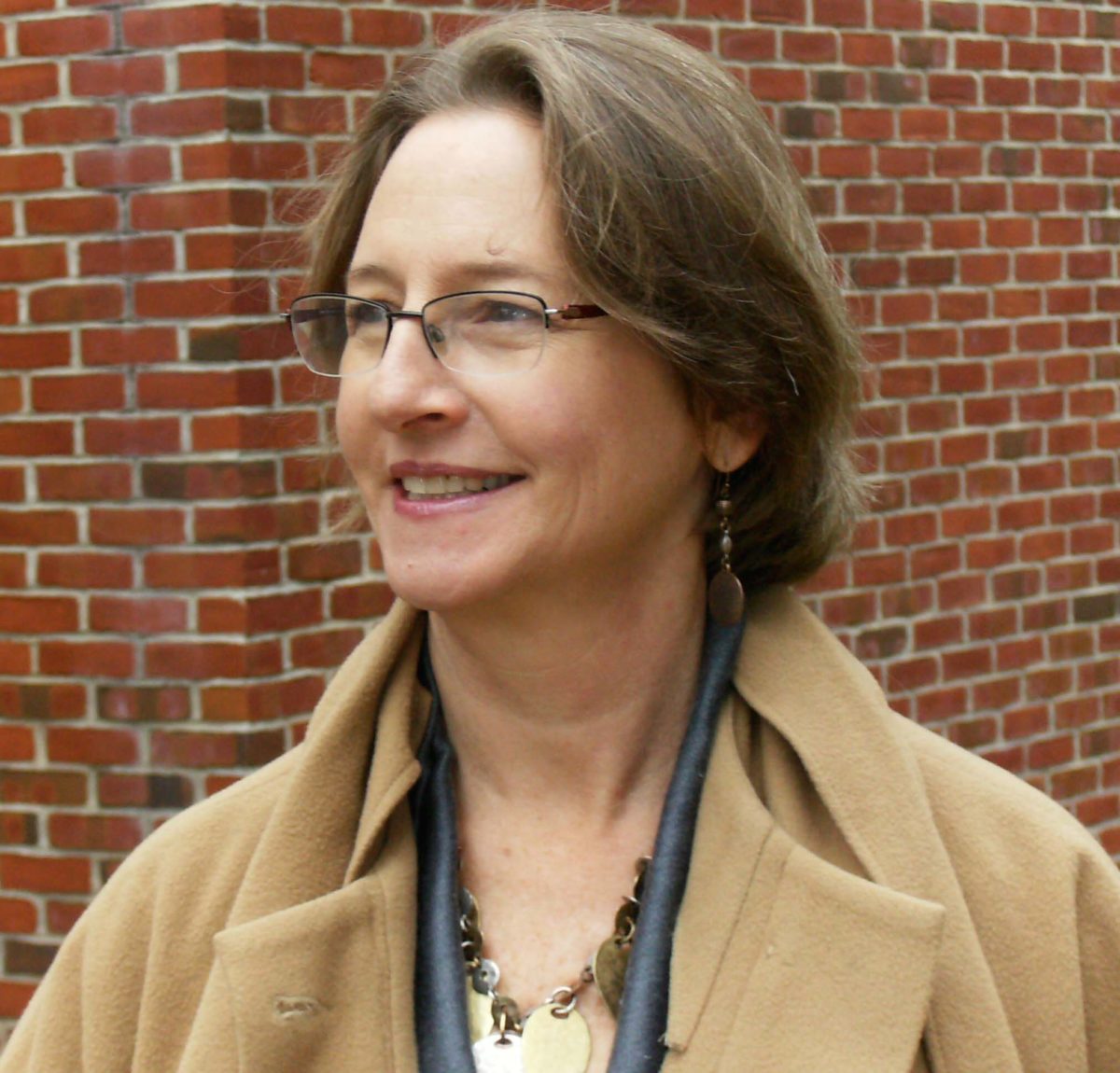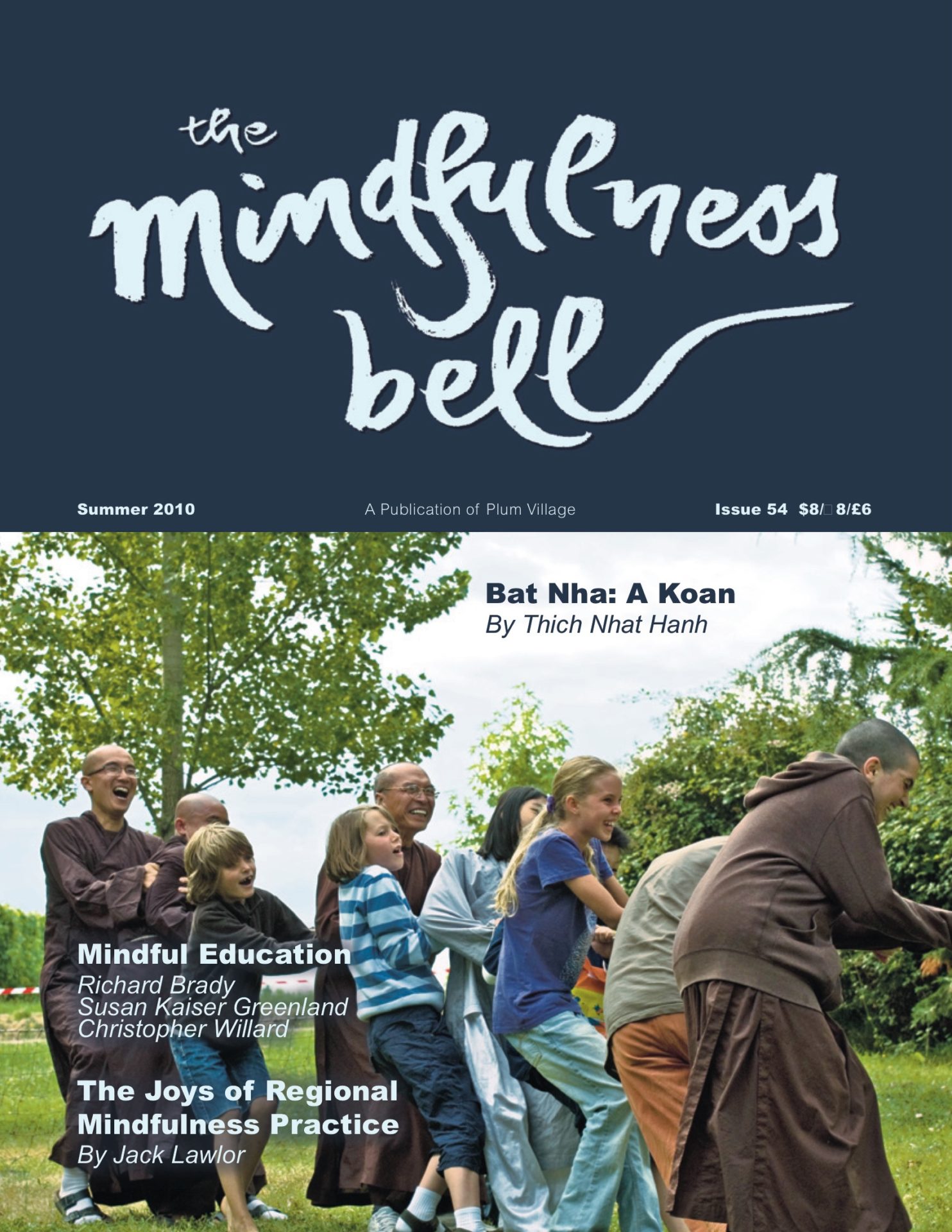Peaceful Relations at the Parliament of the World’s Religions
By Clare Sartori

At the 1993 Parliament of the World’s Religions (PWR) in Chicago, I first heard Thich Nhat Hanh ask, “What is our capacity to enjoy peace?” Seventeen years later, I continue to ask the question of myself, my clients, and my students.
The PWR gathers people practicing in various spiritual traditions around the world in order to deepen mutual understanding.
Peaceful Relations at the Parliament of the World’s Religions
By Clare Sartori

At the 1993 Parliament of the World’s Religions (PWR) in Chicago, I first heard Thich Nhat Hanh ask, “What is our capacity to enjoy peace?” Seventeen years later, I continue to ask the question of myself, my clients, and my students.
The PWR gathers people practicing in various spiritual traditions around the world in order to deepen mutual understanding. The gatherings are informational and inspirational. And while “talk” is the base root of the word parliament, participants make consistent and conscientious efforts to fi ways to “walk the talk.” Many seek to act upon the life-affirming goals and teachings received throughout the week.
Taking part in the parliaments with my husband, Art, has been a great learning and sharing experience. Since I heard Thay’s question in 1993, I have attended the three subsequent PWRs: in Cape Town, Barcelona and most recently, Melbourne. The December 2009 Melbourne Parliament included an exhibit entitled “Sacred Sites, Sacred Solidarity.” The display featured posters of sanctuaries, shrines, holy cities, and sacred mountains in many faith traditions. Each site was or is threatened by environmental or political attacks.
The Engaged Buddhism poster featured Bat Nha monastery and included a summary of recent events. Standing at the exhibit, I collected over 200 signatures to send to U.S. White House officials, the European Parliament, the Association of Southeast Asian Nations, and the Consul General in Hanoi. The signatures represented over nineteen faiths and fourteen countries. A Vietnamese man living in Australia thanked me profusely and photographed me with the Bat Nha poster for a journal article for Vietnamese Catholics in Australia. The Mindfulness Practice Communities of Australia collaborated to produce a pamphlet on the Bat Nha monastics that circulated through the week. The pamphlet included Plum Village contact information and the helpbatnha. org website.
Wearing my Tiep Hien Order brown jacket during the Parliament was an honor and a responsibility. I was careful to walk mindfully throughout the day. A few other Order members were present and it was gratifying to connect. I also felt supported by the presence of Buddhist practitioners and people from other spiritual traditions.

An Obama administration representative came to hear what people of various faiths felt were the most pressing issues. He said he’s a Buddhist who gained a lot from Thich Nhat Hanh. He was well informed about Bat Nha and discouraged by the response from the Vietnamese government. He claimed the government had been trying to cast the situation in terms of inter-Buddhist rivalries, but that was clearly a false perception.
After one talk, I met a Buddhist nun, the Reverend Guo Cheen, who was eager to discuss Bat Nha. She became instrumental in organizing a discussion of possible actions to support the peaceful monks and nuns being harassed. Reverend Cheen facilitated the session and follow-up actions by posting the Bat Nha petition and Thay’s koan on websites for The Compassionate Action Network and Peace Next.
The Bat Nha discussion followed a recorded talk by Thay, addressed to parliamentarians and those planning to attend the Copenhagen Climate Change summit. We were delighted when Brother Phap Kham joined the group. We were also joined by a young Buddhist monk from another tradition who lived in Vietnam and had been harassed by the religious police. Brother Phap Kham began our meeting with singing, then offered the latest news. He said that the monastics would appreciate our expressions of spiritual solidarity and prayers. The next morning, a gentleman from our group, Hal, created a YouTube video (http://www.vimeo.com/8115448) that the monastics could see in Vietnam. The video includes individual expressions of spiritual support for the monastics, beautiful images, and loving verses of hope and comfort. When Hal asked some Vietnamese if they would like to be in the video, they looked quite fearful. They explained they didn’t want to risk losing their visas to return to Vietnam.
Every day outside the Parliament, a group of people stood with signs saying their brand of truth was the only truth. The first day I passed them, my shoulders rose in an involuntary defensive stance. I became aware of my breath, smiled, then dropped my shoulders. I frequently practiced metta along my walks. The last day, I walked over to the people holding the banner and spoke with them. We were able to find some common ground and maintain mutual respect. My heart had truly widened; I felt much compassion for them and gratitude to Thay and for the circumstances that brought me to this practice.
The title “Unified Buddhist Church” is so much more meaningful to me following my experience in Melbourne. Interfacing with people of various traditions is an example of how we can practice interbeing, learning from others as we allow the Dharma to flower within our presence. Like many practitioners, I remain connected to my root tradition. I attend a weekly gathering at a church in our home community in Rhode Island. The gathering includes ministers and lay people from various Christian faiths, all engaged in social justice issues. They have welcomed learning about Buddhist practices such a non-dualistic thinking, nonattachment to views, awareness of suffering, mindful speech and deep listening. Because the monastics of Bat Nha are not permitted to practice together in Vietnam, they are present within me as I practice and I believe they smile as I forge harmonious relationships with people who have different views.

Clare Sartori, True Mountain of Peace, practices with Clear Heart Sangha in Wakefield, Rhode Island. She is a psychotherapist and has been involved in interfaith activities for over 20 years.

